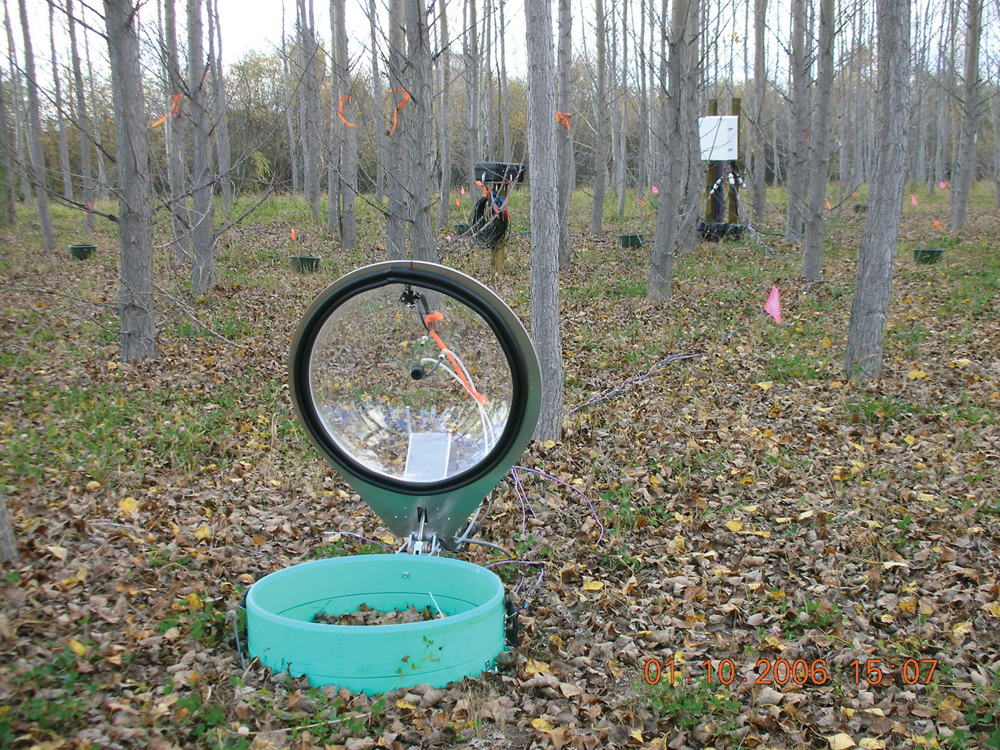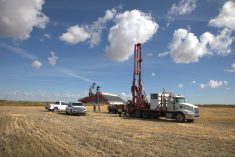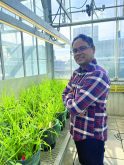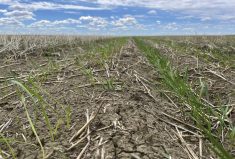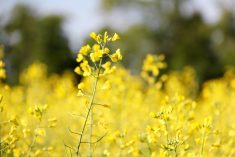A biosolid-based fertilizer that has improved soil and reduced greenhouse gas emissions in the forestry sector could, with research, be useful for agriculture, according to one University of Alberta professor.
Scott Chang’s research combined pulp mill waste with conventional fertilizer to support growth of hybrid poplar trees in northern Alberta. The idea was to develop a greener alternative to using conventional fertilizers alone.
That same concept could carry over to grain production, Chang noted.

“There is opportunity to test it in crop production systems as another potential means to utilize these biosolids,” he said.
Read Also

Calgary based ag-tech company signs partnership to bring next-generation micronized elemental sulphur technology to the UAE
Sultech Global signed an agreement with ADNOC Sour Gas to bring micronized elemental sulphur to the UAE.
It will take a lot of work to get there. For one thing, it’s hard to say how well the biosolid-urea hybrid would work as a fertilizer on annual crops, which require more nutrients than trees, said Chang.
“More research would definitely be needed. How other constituents contained in the biosolids might affect crop quality or food quality is unknown.”
There is also the issue of contaminants, which Chang did not have to be concerned about in his forestry trials, since the end products weren’t going near Canada’s food system.
The study
The two-year research project took place in 2007 and 2008, but results were only recently published.
It got its start when Alberta-Pacific Forest Industries established hybrid poplar plantations near its mill in the Boyle, Alta., area. The village is 160 kilometres north of Edmonton.
The company initially planned to establish 1,200 hectares of hybrid poplar plantations every year over a 20-year period.
“The objective was to use those hybrid poplar plantations in the future as a source of wood fibre to supply their pulp mill needs,” said Chang.
“The idea was really nice because the hybrid poplars will grow five times faster than native trees in native forests. So instead of having to wait for 100 years to harvest those native forests, you would only have to wait for 20 years to harvest those hybrid poplars.”
While the company’s full plan ultimately fell through, Chang and his fellow researchers started to wonder if the landfill-destined wood fibre byproducts coming from the mill had potential as fertilizer for the poplars that had been planted.
“We were thinking that these biosolids were mostly organic matter … The wood itself has a lot of cellulose and very little nitrogen content,” Chang said. “They contain really low amounts of other contaminants. It’s really a fairly rich source of organic carbon.”
The researcher set out to discover how many nutrients the pulp mill waste could provide.
The process came with some environmental risk. Although pulp mill biosolids are generally low in toxicity, the researchers didn’t know the effects they might have as they decompose.
“Every time you add sources of nutrients or organic matter to the soil, you’re going to disturb microbial populations and influence these transformation rates,” Chang said.
“The rate they are changing in the soil could have implications for the emissions of greenhouse gases. But there may be some implications for our ability to mitigate climate change as well.”
The research team had the idea of combining biosolids with conventional fertilizer in the form of urea, though that would bring additional emissions in the form of nitrous oxide.
The research was broken into three tests: the effects on soil of biosolids alone, urea alone, and urea plus biosolids.
The addition of biosolids increased soil carbon dioxide and nitrous oxide emissions by 21 and 17 per cent, respectively, while urea increased emissions by 30 (carbon dioxide) and 83 (nitrous oxide) per cent, respectively.
However, something remarkable happened when the substances were combined.
Although the higher-emitting urea was added to the mix, there was no jump in carbon dioxide emissions, and nitrous oxide emissions were reduced compared to chemical fertilizer alone.
In terms of soil traits, the addition of biosolids and biosolids plus urea increased soil dissolved organic carbon and microbial biomass.
The addition of urea, as well as biosolids with urea, increased soil inorganic nitrogen, available phosphorus and denitrifying enzyme activity.
The hybrid fertilizer failed to create a statistically significant improvement in tree growth, said Chang. However, it positively impacted soil health by way of elevated organic matter.
“The increase in available nutrient concentration in the soil [causes] it to become more available for plants to take up, to potentially improve the production yield of crops,” Chang said.
Soil health benefits should be another factor of interest for agriculture, he added.
“There is potential in terms of biosolids as a potential source of nutrients, a potential source of organic matter, because the soil can always benefit from organic matter input.”


